#the stadholder
Text

Jan Mijtens (Dutch, 1614-1670)
Portrait of Maria of Orange (1642-1688), with Hendrik van Zuijlestein (d. 1673) and a Servant, ca.1665
Mauritshuis, Den Haag
This is the portrait of Princess Maria of Orange, the youngest daughter of stadholder Frederik Hendrik. It was intended for her future husband, so that he could see what she looked like.
The princess is attired in a striking riding habit decorated with lots of lace, gold braid and bows. To her right, a black page is holding the reins of her grey horse. The blond boy on the left is Hendrik, the son of Maria’s half-brother.
#Jan Mijtens#dutch#dutch art#1600s#1665#maria of orange#maria d'orange#hendrik van zuijlestein#art#european art#classical art#fine art#europe#european#fine arts#oil painting#europa#classical#traditional art#painting#female portrait#noble#royal#royalty#nobility#aristocrat#netherlands#netherlandish#western civilization#Frederik Hendrik
22 notes
·
View notes
Text

Maria van Oosterwyck, also spelled Oosterwijck (1630–1693, Dutch)
Maria was a Dutch Golden Age painter, specializing in richly detailed flower paintings and other still lifes. The daughter of a clergyman, Maria is thought to have studied with Jan Davidsz de Heem and her compositions certainly betray his influence. She never married, although Houbraken claimed that she was courted by her fellow artist Willem van Aelst. Her paintings were much admired by her contemporaries and she received considerable patronage from various European monarchs including Louis XIV, Emperor Leopold I and Stadholder-King William III.
Bio: https://en.wikipedia.org/wiki/Maria_van_Oosterwijck
Other artworks: https://www.artnet.com/artists/maria-van-oosterwyck/2
#dianthus#carnation#tagetes#poppies#roses#hibiscus#sunflower#painting#still life#flowers#flower vase#women in art#woman artist#woman painter#woman artwork#dutch art#17th century art#17th century painting#Maria van Oosterwyck#maria van oosterwijck
22 notes
·
View notes
Text

The Violin Player | Gerrit van Honthorst | 1626 | Mauritshuis
"The Utrecht painter Van Honthorst lived for a while in Rome, where he was influenced by the work of Caravaggio. He caused a sensation with his night paintings, which gave him the nickname ‘Gherardo delle Notti’, Gerrit of the Nights. But he also made cheerful figure paintings, such as this enticing young woman.
Van Honthorst was one of the Utrecht Caravaggists, and his modern, dramatic style had a great influence on Dutch painting. When he became court painter to stadholder Frederik Hendrik, his style became gradually daintier."
#The Violin Player#Gerrit van Honthorst#mauritshuis#den haag#holland#netherlands#the netherlands#caravaggio#caravaggisme#utrecht#bella ramsey
10 notes
·
View notes
Text
The Wrath of Rampjaar: The Death and Destruction of Johan De Witt
The 1600s was a difficult chapter for human life. All over the world wars tore at the seams of land and families, and those that did not fall in battle found themselves vulnerable to falling from disease and plague brought on by forces that could not yet be understood. Many things that could not be explained resulted in further violence, fanaticism, death, and destruction dealt from one hand only to be horrifically felt by the other. Breakthroughs in science, exploration, and the arts collided with religious extremism and prejudice as humanity as a whole spun on, seemingly with chaos in every corner.
The Netherlands were one part of the world with turmoils erupting within their borders. In 1672 the country formerly known as the Dutch Republic was seeing the end of the “Dutch Golden Age” with simultaneous wars with England, France, and two German cities. The year 1672 would enter the history books as the Rampjaar, The Disaster Year. The Dutch people coined a phrase to describe this most unfortunate time: “The people were irrational, the government helpless, and the country beyond salvation.”

Allegory of the Disaster Year by Jan van Wijckersloot (1673). Image via Wikipedia.
Although it was obvious there were multiple problems facing the Dutch Republic in the 1672, some believed the problems took root decades earlier. William II Prince of Orange died of smallpox in 1650 leaving the Dutch with no official leader (referred to as a Stadholder.) It was this same year that Johan De Witt began to make his mark in the politics of the region. Johan’s family were bitter rivals of the Oranges and as De Witt began to move up the political ladder he allegedly (with the help of his powerful father who spent time in prison for his involvement in a coup d'etat of William II) quietly made moves and had words written into political documents to keep the young William III or any member of the Orange family from ruling. This allowed wheels to be set in motion to form a fully Republican regime with De Witt at the helm. After holding a number of high-standing positions he was elected to the role of Grand Pensionary of Holland in 1653, essentially making him the ruler of all Dutch provinces.
By the time the 1672 Year of Disaster loomed over the Dutch Republic the people had already endured enough war and horror to last a lifetime under the eye of Johan De Witt. There were the Anglo-Dutch Wars which threatened the land, but De Witt remained focused on the sea, taking every step possible to protect the economic interests in shipping and trading that filled his pockets while paying little mind to the forces surrounding the Dutch at their front doors. He also made it a point to delay the appointment of William III as captain general. The stubbornness of De Witt would have deep consequences when in May 1672 Louis XIV invaded the Dutch Republic, thus beginning the third Anglo-Dutch War.
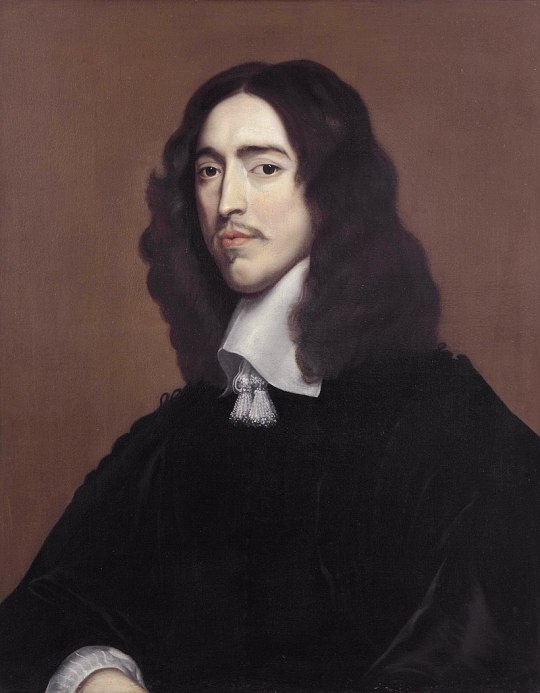
Portrait of Johan De Witt by Adriaen Hanneman (1652). Image via Wikipedia.
As troops moved straight into the heart of their homeland the exhausted Dutch people felt betrayed by their leadership and all eyes turned to Johan De Witt. Some were content to simply, but loudly, voice their opinions that the House of Orange should take back their power by any means necessary. Others showed their feelings of anger and betrayal in much more aggressive ways. On June 21st 1672 Johan De Witt was attacked by a man who was armed with a knife and an intent to kill. The assailant did succeed in brutally stabbing him, but he survived. Johan’s brother Cornelis was also feeling the pressure of the simmering public and on July 24th he was arrested under charges of treason against the House of Orange. He was brought to prison in The Hauge where he was tortured in order to obtain a confession. While his brother was recovering from being nearly assassinated, Cornelis was refusing to confess to any wrongdoing and was eventually sentenced to exile.
Being attacked with a malicious blade changed De Witt and after a lengthy recovery he resigned from his position on August 4th 1672. At the time of his resignation his brother Cornelis was still wallowing in prison with his exile looming. On August 20th Johan visited his brother at the prison to assist him and see him off on what was supposed to be his date of forever departure from his homeland. It is unknown what the pair discussed that day, but it is almost certain they had no clue what was about to happen. Yes, Johan resigned and Cornelis was exiled, but the Dutch people were not ready to let the brothers walk peacefully away into a new chapter while they were left with suffering and debt that could follow them for generations. As the brothers talked in the prison they were attacked by a mob that were set on tearing them limb from limb.
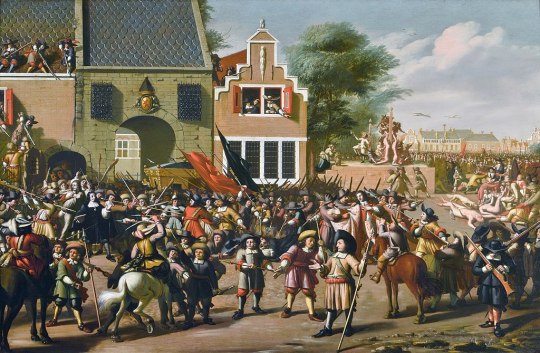
The Murder of the de Witt Brothers by Pieter Fris. Image via Wikipedia.
What unfolded was a scene that was feral, ferocious, and that has gone down in history through eyewitness accounts and multiple pieces of art. The mob ravaged the De Witt brothers. They were dragged into the street, shot, stripped of their clothing, and taken to the public gallows. If the brothers thought their end would be found in a broken neck at the end of a hangman’s noose they were terribly wrong. Once strung up the mob began to take souvenirs. Some accounts report that their eyes were stolen, others say they were later cut into pieces and distributed to the masses, and while that is up for debate one thing that is certain is that their bodies were sliced open, their livers stolen, and the organs were then roasted and consumed by those in attendance. After a lifetime of prestige and twenty years in power, Johan De Witt departed life alongside his brother after being mutilated and cannibalized by his own countrymen.
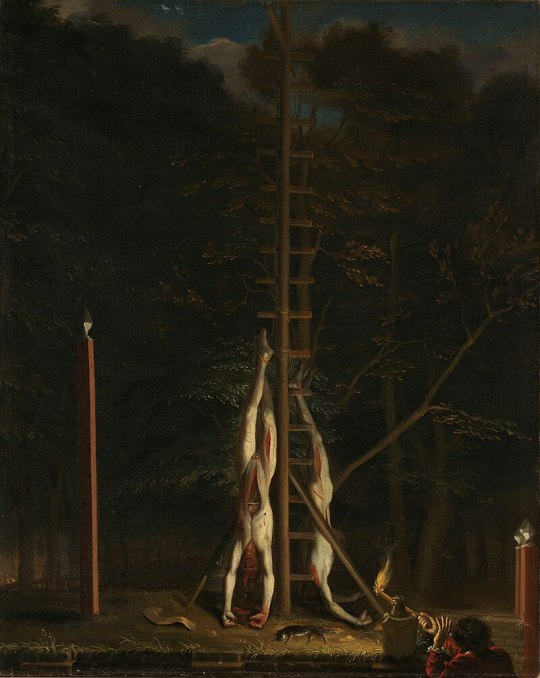
The Corpses of the De Witt Brothers by Jan de Baen. Image via Wikipedia.
With De Witt gone power went to William III of Orange, the same man who had his appointment as captain general stalled by De Witt and the son of William II whose death was used by De Witt and his father to make the turn to the Republican force that they hoped would keep the House of Orange out of power for good.
Whether William III had a hand in planning the attack and death of the De Witt brothers is debated to this day with answers unknown.
Today the prison where the De Witt brothers spent their last moments on earth still stands and has been repurposed as a history and art museum.
**********************************************
Sources:
That Time the Dutch ate their Prime Minister by Vlad Moca-Grama. DutchReview.com, March 3rd 2023. https://dutchreview.com/culture/dutch-history-crowds-ate-prime-minister/
A Dark and Stormy Bite: That Time a Bunch of Dutch People ate Their Prime Minister by Lillian Stone. TheTakeout.com, January 15th 2021. https://thetakeout.com/a-dark-and-stormy-bite-that-time-a-bunch-of-dutch-peop-1846044366
Johan De Witt. Encyclopedia.com.https://www.encyclopedia.com/history/encyclopedias-almanacs-transcripts-and-maps/johan-de-witt
#husheduphistory#featuredarticles#history#forgottenhistory#strangehistory#weirdhistory#tragichistory#historyclass#truestory#truth is stranger than fiction#DutchHistory#NetherlandsHistory#JohanDeWitt#ShockingHistory#horrorhistory#sadstory#HollandHistory
4 notes
·
View notes
Text
------------------------------------------------------------------------------"I love you without knowing how, or when, or from where. I love you simply, without problems or pride: I love you in this way because I do not know any other way of loving but this, in which there is no I or you, so intimate that your hand upon my chest is my hand, so intimate that when I fall asleep your eyes close."
— Pablo Neruda (100 Love Sonnets) ------------------------------------------------------------------------------

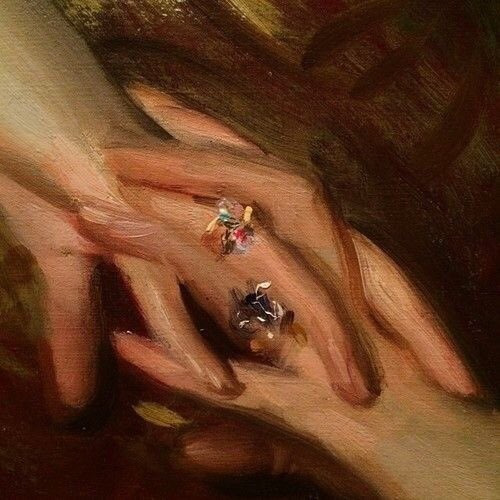


------------------------------------------------------------------------------“The way our fingers intertwine feels so natural and right; as if our hands hold memories of meeting in a thousand other lifetimes.”― John Mark Green
------------------------------------------------------------------------------

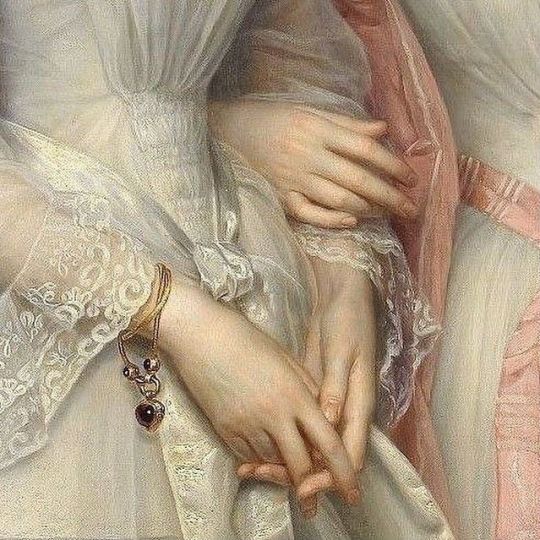


.............................................................................................................................“your hand
touching mine.
this is how
galaxies
collide.”
― Sanober Khan ..............................................................................................................................


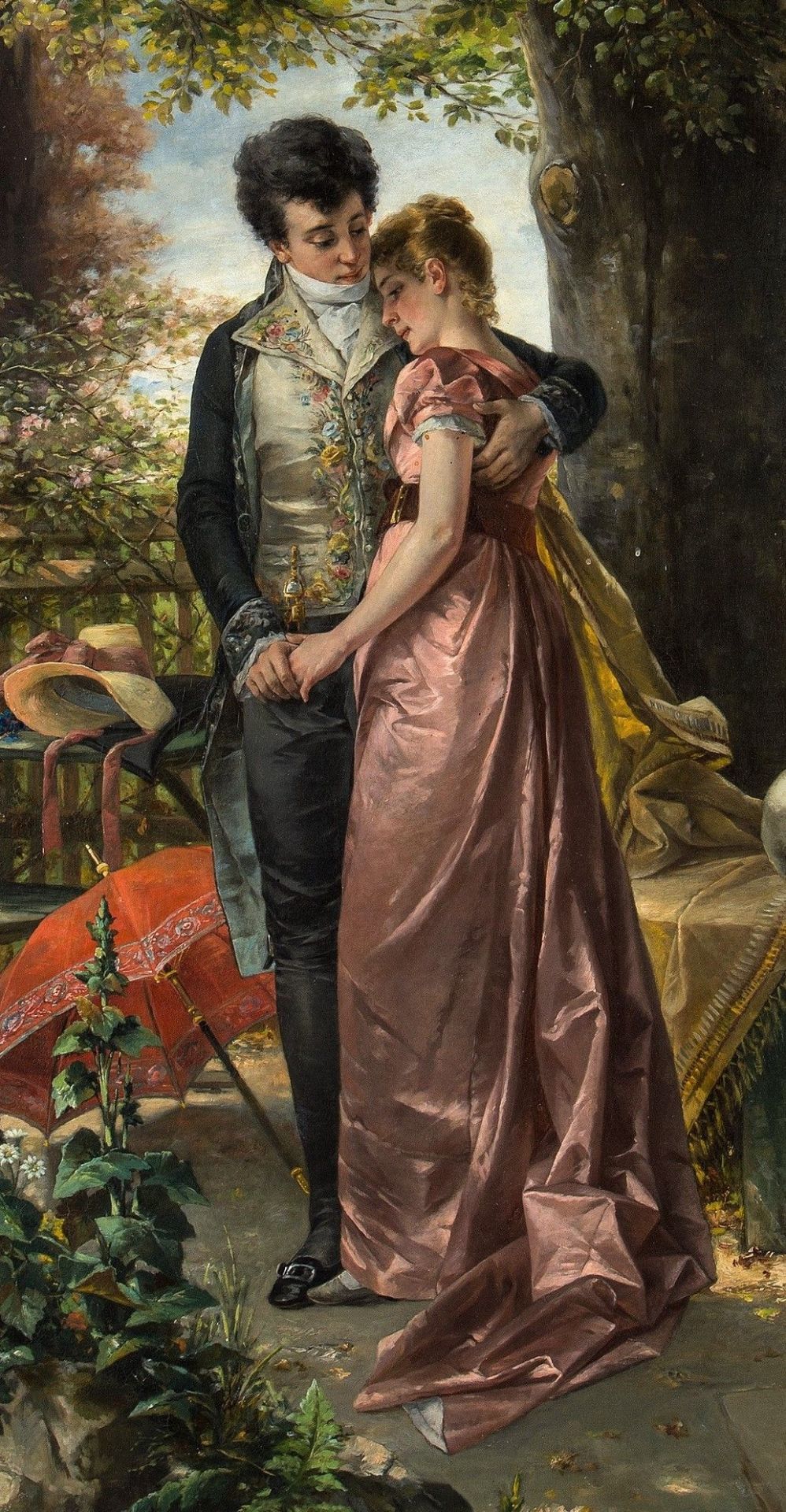

.............................................................................................................................“Here, when I say I never want to be without you,
somewhere else I am saying
I never want to be without you again. And when I touch you
in each of the places we meet,
in all of the lives we are, it's with hands that are dying
and resurrected.
When I don't touch you it's a mistake in any life,
in each place and forever”
― Bob Hicok ..............................................................................................................................
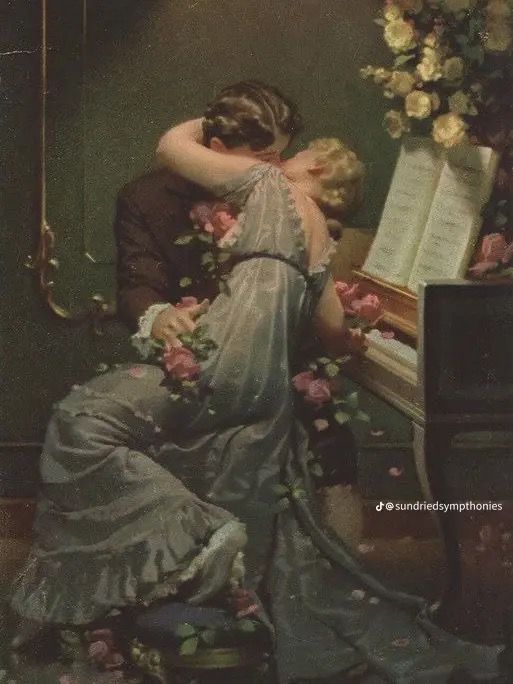


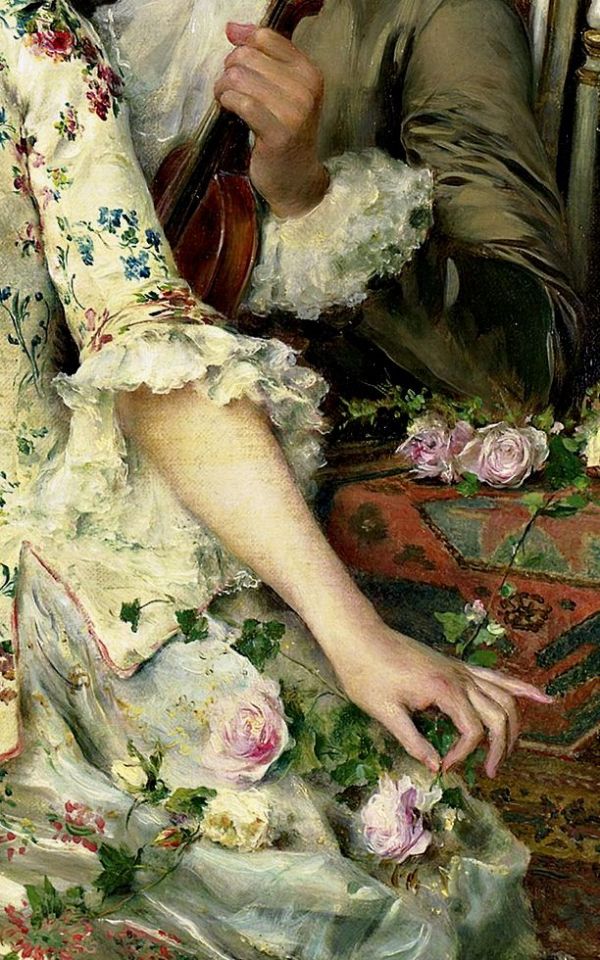
~~~~~~~~~~~~~~~~~~~~~~Image References~~~~~~~~~~~~~~~~~~~~~~~~
1)To Capture Beauty - Daniel F. Gerhartz
2) Mrs. John Jay Chapman - Elizabeth Winthrop Chanler
3) La Belle Dame sans Merci - Poem by John Keats
4) The Future Stadholder Willem II, Prince of Orange, and His Bride Princess Mary Stuart - Anthony van Dyck
5) Unknown ( Will edit and give credit if I find the source)
6) Portrait of the sisters Malvina Anny Louise and Hilda Sophie Charlotte Reventlow - Heinrich August Georg Schiøtt
7) Springtime -Pierre Auguste Cot
8) A Thorn Amidst Roses - James San
9) The End of the Quest - Frank Dicksee
10) The Jewish Bride - Rembrandt
11) Painting by Carl Herpfer
12) The Card Game on the Cradle: Allegory - Johannes van Wijckersloot
13) The Art of Love - Danna Reich Colman
14) The Ballad - Daniel F. Gerhartz
15) Lady Scounder - Robert Berran
16) A new basket of flowers - Federico Andreotti
~~~~~~~~~~~~~~~~~~~~~~~~~~~~~~~~~~~~~~~~~~~~~~~~~~~~~~~~~~~~~~~
(Format of this post might be slightly distorted on phone and/or browser version of tumblr)
#romantic academia#romantic#hand#hands#hand aesthetic#vintage academia#vintage aesthetic#vintage art#renaissance#books and reading#love quotes#life quotes#book quotes#quote#quotes#beautiful quote#19th century#18th century#painting#oilpainting#i love you#lovers#history#100 love sonnets#papbloneruda#dark academia#light acadamia aesthetic#classic academia#johnmark#valentines day
8 notes
·
View notes
Text

The royal box of the theatre on the Keizersgracht during the visit of stadholder Willem V and his wife by Simon Fokke, 1768
wikimedia
0 notes
Text

Portrait of Princess Frederika Sophia Wilhelmina of Prussia
Artist: Johann Georg Ziesenis (1716–1776)
Genre: Portrait
Depicted People: Wilhelmina of Prussia, Princess of Orange
Date: circa 1768-1769
Medium: Oil on Canvas
Collection: Mauritshuis
The woman reading here is the very young Wilhelmina of Prussia. She was barely sixteen when she was married to Prince Willem V, the stadholder of Holland.
#portrait#princess frederika sophia wilhelmina of prussia#18th century art#johann georg ziesenis#royalty#german royalty#custome#book#dog#drapery
1 note
·
View note
Photo

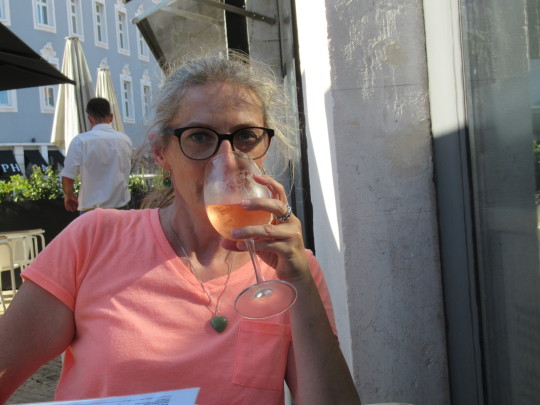



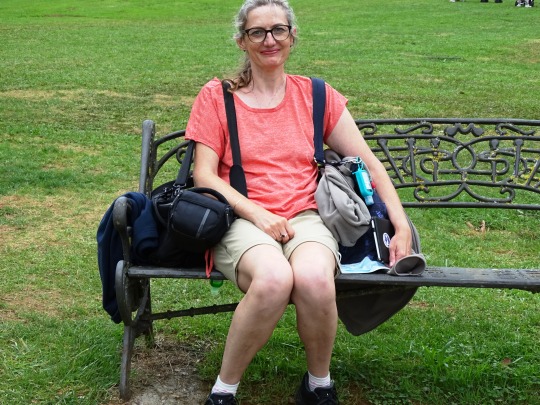
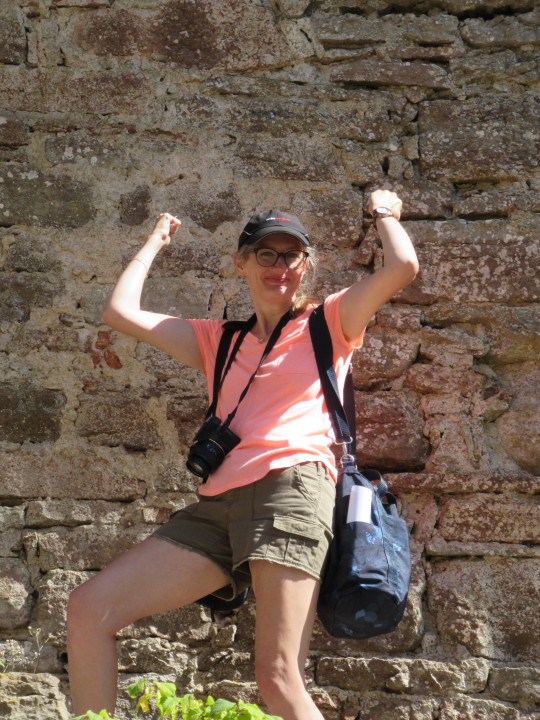
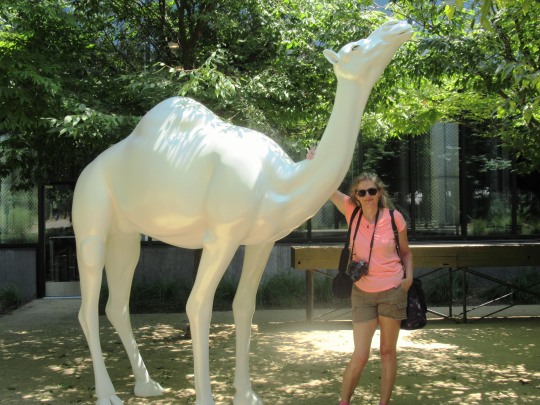


No Orange Clothes Day
No Orange Clothes Day commemorates the day in 1784 when the wearing of orange was banned in the Netherlands, a country often informally called Holland. Such a thing seems unconscionable today, as orange is now seen as the unofficial color of the Netherlands, and is worn and displayed everywhere. The color has a long and varied history in the country, dating back to the sixteenth century.
Why did orange become associated with the Netherlands? Orange is the color of the Dutch royal family, and its association with them goes back to William of Nassau, who is also known as William the Silent or William of Orange. William became the Prince of Orange in 1544, at the age of eleven, when the principality of Orange—which had previously been a French principality—came under his control.
In 1568, he became the leader of the Dutch revolt against the Spanish, which led to the creation of the Dutch Republic. The original flag was orange, blue, and white. Following William’s death, it was hard for his successors to hold the Republic together, and most of the power was held in the provincial Estates instead. The orange stripe in the flag was replaced with red. Instead of being a color representing the whole country, orange came to represent the color of the Stadholder, a term for the magistrate. This became even more the case, as the magistrates began to act more like monarchs.
The magistrates began losing power, but some people began giving them support and started wearing orange bows and ribbons. It was because of this that the Estates of Holland banned the wearing of orange on June 15, 1784. But, the Orange ideology began growing internationally and was embraced by groups such as the Protestants in Ireland. In 1813, the Orange monarchy was established in the Netherlands. Its ideology was no longer such an integral part of it, making it more palatable to ordinary citizens. The color orange was no longer illegal and began to have a broader appeal, although it did not completely unify the nation.
Reforms in 1848 lessened the power of the Princes of Orange, but when Queen Wilhelmina came to power in 1890, a lasting bond between the monarchy of the House of Orange and the people was formed. The color orange became celebrated widely. Some wanted the color added back to the Dutch flag, but the flag was officially proclaimed to be red, white, and blue in 1937. Orange continued to gain popularity on its own, being used in flags and banners—even outnumbering the official flag at sporting events and other celebrations.
Today, orange is a symbol of the whole Dutch nation, not just of the monarchy. It is a symbol of pride in being Dutch, and still draws on its history, being a symbol of resistance and sovereignty, just as it was during the time of William and the formation of the Republic. The wearing of orange in mass is known as “Oranjegekte,” meaning “Orange craze,” or “Oranjekoorts,” meaning “Orange fever.” It has been worn by the Dutch to World Cup events since about 1934, and most sports teams in the Netherlands use the color. Not only do the Dutch commonly wear orange in all forms of clothing, the color also covers their houses and shops, and cars and streets. Even some airplanes are painted orange. Orange banners are attached to the Dutch flag on royal birthdays, and the national holiday of Koningsdag, or King’s Day, is held each April and is one of the finest displays of Oranjegekte.
How to Observe No Orange Clothes Day
Although today is known as No Orange Clothes Day, it may actually be more fitting to wear orange clothes than to not wear them. You could wear orange to show your solidarity with the Dutch people, or your pride in the Netherlands if you are a citizen of—or have roots in—the country. But, if you would like to celebrate the day by not wearing orange, you could do that as well. It is really up to you. For those that really want to get into the celebration, a trip could be planned to the Netherlands, possibly to take place during Koningsdag.
Source
#No Orange Clothes Day#Swedish Lapland#Landskrona Castle#Hall Winery#Borgholm Castle#Comillas#Lisbon#Sweden#Portugal#Spain#USA#reflection#Castellfollit de la Roca#landscape#cityscape#Napa Valley#St. Helena#original photography#travel#vacation#summer 2022#2020#2021#NoOrangeClothesDay#16 June#tourist attraction#hiking
1 note
·
View note
Text
Ansvar og Tilsyn ~ Verantwortung und Aufsicht ~ Responsipility and Oversight
During the last 30 years (and more) a discussion has been going on as to who has the responsibility in the church and does that mean, that each and everyone should have the power of supervision? Or, as the discussion started: Why should priests be so “mighty”? Nowadays some of my colleagues however, also ask why should everybody, but for the priests, be so mighty? And what about responsibility and oversight? Here are some observations:
In Den Norske Kirke – since it was (from the Reformation on) established as a state church – the “power” came from the King, thru the bishop to the local priest. Following the Apostolic succession in a new and protestant way. In the last 100 years a process of modernizing power structures – parallel to the political discussion – has been going on. As we have seen, this process was intensified in the 80-ies. We also see that this process is still ongoing and the same questions of how to give things the right twist keep being juggled.
The Evangelische Kirche in Hessen und Nassau (EKHN) – having been construed 1947 (out of 3 existing regional churches) – aimed for democratic structures right from the beginning. This was a given – seen the specific mingling of state and church in nazi times, a decisive process of unraveling was more then necessary. *
To understand the tug of war between democratization and the need to organize responsibility and supervision in the church however, a closer look at the beginnings of Reformation in different countries (under different conditions) might be useful.
In Scandinavian countries, with arrival of the reformation, the church mainly adapted to henceforth be Lutheran. Unlike other European countries, Scandinavia did not experience a strong or violent Counter-Reformation. Hence the colorful liturgical performance of Den Norske Kirke might sometimes be perceived as rather roman-catholic – considering other protestant traditions. A closer look then shows that the use of alb, stole and chasuble is not necessarily synonymous with being roman catholic.
In Germany the local Kings decided what confession would rule in their area. Hence, we still find mainly protestant and mainly catholic villages. Also, here the choice was not made by the people – in average people often don’t know much about their own confession. And as a result, some people leave the protestant church, because of something the pope said (e.g.).
Flanders e.g., ** – being under the reign of Willem van Oranje, Stadholder under Charlemagne in the Netherlands (at that time including Flanders), initially became (almost entirely) protestant in quite short order. Economy however was a large factor in terms of what confession might be more opportune. Wilhelm van Oranje was no exception since he switched confession according to the confession of (in total 4) wealthy brides. The flourishing post-medieval (especially textile) industry in Flanders AND the fact that people were eager to learn reading (to be able to read in the bible for themselves), also enabled them to read and judge their working contract or any other official document, enraged catholic governed countries such as France and Spain as well as wealthy landowners in Flanders. Hence the Inquisition came to Flanders, to take care of this problem and eradicate the “bad habit” of Lutheranism – the latter being code for reading in the bible (which was prohibited by law). Many Protestants then lost their lives, (so to say) to give the ladies at the Versailles palace better access to “appropriate clothing”. The remaining protestant families, and those who converted later, acknowledge this heritage with pride and awe.
This brief (and rough) comparison may illustrate the different ways (and reasons) in which people desire for democratization and likewise shows which trains of thought can entail political or ecclesiastical decisions.
I find it very interesting, that in Den Norske Kirke, after more then 100 years the remaining question about the power balance in the church is around the power of the bishop. This is not a big question in the EKHN and certainly not in the VPKB (Verenigde Protestantse Kerk in Belgïe). In the VPKB Except for Priests and the President of the Synod Board, all positions are voluntary positions. While the EKHN decided not to have bishops but a church president and different “Pröpste” overseeing a geographic area with different deaneries and having supervision over the priests. Around 1999 a reform of the deanery structure evolved, aiming at strengthening the middle structure of the church and hoping to even “flatten” the hierarchy. The function of a dean then changed from primus inter pares to superior of the priests. Deans were now subordinate to the church president. Provosts remained part of the joint bishop function (Das Leitende Geistliche Amt). In praxis this meant that the soul care line of priests switched from de Dean to the Propst (or Pröpstin).
Another structural change in 2010 then resulted in the fact that the Propst (or Pröpstin) now has supervision over the deans and the joint bishop function now became part of the judicatory. In praxis this meant, that priests now have lost their soul care line. *** As a matter of fact, these changes in the EKHN – unlike the original intentions – turned out to be a strongly felt hierarchization. Also, the building of neighborhoods (several local parishes having to work together – by synodal resolution) are in fact (in many parishes) being perceived as strong interference from above****. Even though parish councils were invited to comment on the resolution proposal of the deanery synod board, the anxiety level remains high, and parishes might eventually resolve in basic resignation, while peaks of anxiety might keep popping up. This being related to a general existence fear (in human beings) whenever changes are ahead, it is generally not easy, for councils to return to working mode.
Whereas it is impossible to lower this general existence fear, there is another kind of fear that usually pops up, when survival anxiety rises high: the fear of not being able (anymore) to learn new things, to be able to cope with changes ahead. Experience from Change Management and Transition Ministry has shown that it is very well possible to work with boards and individuals, to lower this specific fear. Interestingly, after this fear has lowered to a manageable level, the general existence fear seems to lower as well! From my work as a congregational consultant and trained Transition Specialist I learned that these fears are as unavoidable as they are unignorable. We may eventually be able to avoid these fears if we don’t make changes. But then, judicatories don’t usually envision changes just for the fun of changing! Hence dealing with the fears is part of the work ahead.
So, if we want employees and volunteers in the local parishes to deal with changes in a responsible way, we need to acknowledge these fears and treat them (the people and their fears) lovingly. To treat lovingly, judicatories need to be open for conversation – especially about supposedly irrelevant matters. Hence there is a need for consultation on all levels of the church. Local churches need to adapt, and judicatories (on all levels of the church) need to comply to an adapted situation as well! And this is by no means a side issue – on the contrary it is a genuine leadership responsibility, to ensure this emotional process as part of the change process.
An African story ***** may illustrate this: A (missionary or explorer) expedition once made its way thru Africa. After several days of traveling, the carriers refused to get back en route. “What is wrong? Do they need more money?”, the Leader of the expedition asked. So, the translators were sent out, to find the reason for this refusal to go further. When the translators came back, they said: “No, the people do not want more money! They say, they now must wait for their hearts to follow up.”
Change is not exactly natural for human beings and seldom comes over night. Change certainly does not happen per Ordre de Mufti! Change however can work out well, as an adaptive process. Process oriented change allows the people involved, to take on their responsibility. And then develop the necessary energy and phantasy for the tasks ahead.
Leadership then is enabling people to take on their responsibility. Oversight (as part of leadership) also means to provide opportunities, time and means for change to happen in a responsible and “doable” way.
Priesthood of all believers then means to cherish the responsibility of all (believers, members, listeners, bystanders, and leaders). In the Church as an organization all have responsibility (in a protestant understanding) and some are chosen from the midst of all responsible and are entrusted with leadership and oversight. ******
*) See earlier Article on “Congregational or episcopal Character of the Church” in this Blog.
**) As a Flemish protestant, I consider this third and quite different historical perspective fruitful as to how the church of Jesus Christ has formed in different geographical areas, under different conditions.
***) An initial motion to allow the church president to use the title of bishop, was at the same time denied by the Synod.
****) Sovereignty of the parish being one of the protestant basic strongholds.
*****) From oral tradition; story telling is a traditional way of passing on wisdom. This story is from African wisdom.
******) cfr. The Choosing of the Seven (Acts 6,1-7) and Seventy Elders anointed (Numbers 11,16-24)
0 notes
Text
Up thinking again about how funny it was that the most big history blogs could come up with as criticism of my old posts and memories the 1700s online, that;
1) It was too true to historic record (g-d imagine I was correct about what I was saying, adding details that couldn't be disproven by written record. They also neglected to pass over posts where I refuted common legends and misconceptions.)
2) I currently am neither a politician nor a soldier. Why in all that is holy would I ever do that to myself again? I do not endorse the military in any capacity, and politics is a vipers nest that has killed me before (not just once, but multiple times, as far as I can remember, in three different lifetimes. All three financial ministers. Once I got beheaded, once I died of overwork and organ failure from stress, and once I got shot. None of those lives actually helped things in the long run. Wouldn't touch politics with a ten foot pole for a million dollars.)
G-d imagine someone learning from their past mistake and choosing happiness over personal duty. I have always valued love, books, and family. This time I can actually prioritize it. And if that somehow disproves that I used to be Hamilton; so be it. I'll just keep on laughing.
4 notes
·
View notes
Photo

Orang-utan from the Zoo of Stadholder Willem V, Picking an Apple, Tethart Philip Christian Haag, 1777, Mauritshuis Museum
https://www.europeana.eu/portal/record/2021672/resource_document_mauritshuis_813.html?utm_source=api&utm_medium=api&utm_campaign=j4AoMQNzp
56 notes
·
View notes
Text

Anthony van Dyck (Flemish/Spanish Netherlands, 1599-1641)
Portrait d'un homme de qualité avec son fils, 1625-50
Musée du Louvre
The Spanish Netherlands, (c. 1579-1713), Spanish-held provinces located in the southern part of the Low Countries (roughly corresponding to present Belgium and Luxembourg).
As Holland represents only a portion of the Netherlands, or "Low Countries," a brief account of the greater includes the less. The Low Countries were included in the empire of Charlemagne and christianized. During the latter part of the Middle Ages the cities of the Netherlands rose to a very high state of prosperity, and some of them became independent republics. Charles V of Spain formally added the Netherlands to the Spanish crown. In 1555 he resigned his rule over the Low Countries to his son Philip II. Charles had persecuted the Protestants, but Philip outdid him in bigotry and cruelty. He was resisted by the Dutch, led by William of Orange. In 1567 the Duke of Alva came from Spain with a large army. Alva's Bloody Council condemned the Netherlanders by wholesale, merely for the sake of their religion and patriotism, and in 1568, sentence of death was pronounced against all the inhabitants of the Netherlands, with only a few exceptions, as heretics. The bloody struggle continued many years, and the Prince of Orange gained ground, but lost it through the terrible massacre of St. Bartholomew. The little town of Alkmaar withstood a great Spanish army and finally drove the besiegers away by cutting the dikes and flooding the country. In 1573 Alva was recalled by Philip II. Leyden, the seat of the ancient university, was also besieged, held out for five months, and was delivered by cutting the dikes. The Dutch navies were nearly always victorious, and the heroic Netherlands, after many struggles and severe trials, made their country a refuge from religious oppression. The Puritans, driven from England, found freedom there, and left Holland only to found colonies in America and elsewhere. The struggle with Spain had to be carried on for centuries. After many ups and downs, the Republic of the Netherlands had another William of Orange, a Stadholder of Holland, until he was called to the English throne, in 1688. The thrifty Dutch established successful colonies in all parts of the world. William I, II, and III were kings of the Netherlands nearly all the 19th century.
#Anthony van Dyck#art#flemish art#flemish#spanish netherlands#1500s#fine art#fine arts#classical art#man#european art#europe#european#oil painting#mediterranean#europa#spanish history#european history#netherlands#netherlandish#netherlands history#history#holland#spain#1600s#1700s#world history#hispanic
67 notes
·
View notes
Text

Maria van Oosterwyck, also spelled Oosterwijck (1630–1693, Dutch)
Maria was a Dutch Golden Age painter, specializing in richly detailed flower paintings and other still lifes. The daughter of a clergyman, Maria is thought to have studied with Jan Davidsz de Heem and her compositions certainly betray his influence. She never married, although Houbraken claimed that she was courted by her fellow artist Willem van Aelst. Her paintings were much admired by her contemporaries and she received considerable patronage from various European monarchs including Louis XIV, Emperor Leopold I and Stadholder-King William III.
Bio: https://en.wikipedia.org/wiki/Maria_van_Oosterwijck
Other artworks: https://www.artnet.com/artists/maria-van-oosterwyck/2
#dianthus#carnation#tulips#irises#butterflies#painting#still life#flowers#flower vase#17th century art#17th century painting#dutch art#Maria van Oosterwyck#maria van oosterwijck
3 notes
·
View notes
Text

Tethart Philipp Christian Haag (Dutch, 1737-1812) - Orang-utan from the Zoo of Stadholder Willem V, Picking an Apple (1777)
73 notes
·
View notes
Text

The departure of a dignitary from Middelburg, by Adriaen Pietersz. van de Venne, 1615
The warship De Zeehondt is towed out of the port of Middelburg with the help of four heavily built draft horses, towards the sea. It is not known who sets out from high and low amid so much interest. It must be someone of prestige, because even the yacht of Stadholder Maurits is present: it fires a salute.
28 notes
·
View notes
Text

Tethart Philip Christian Haag
Orang-utan from the Zoo of Stadholder Willem V, Picking an Apple 1777
Mauritshuis
11 notes
·
View notes